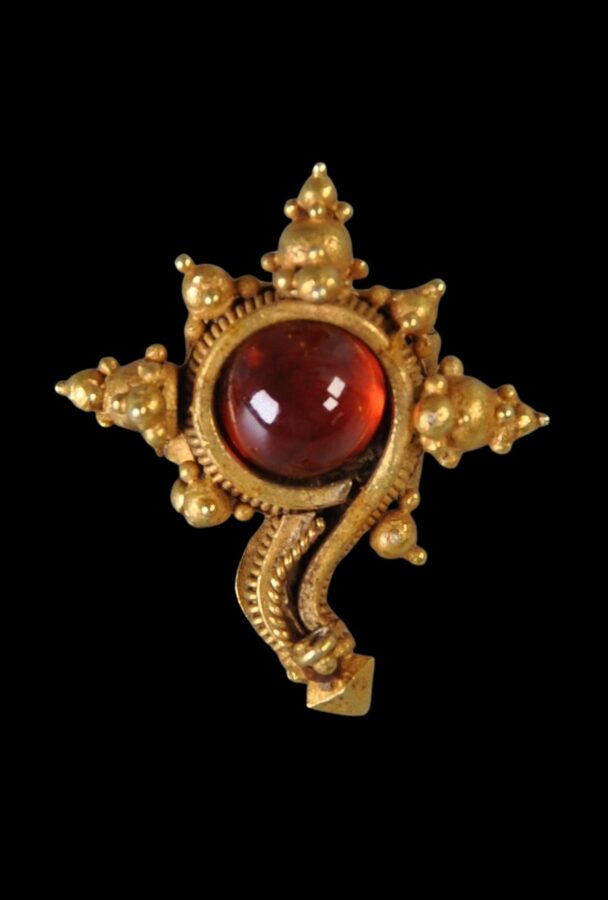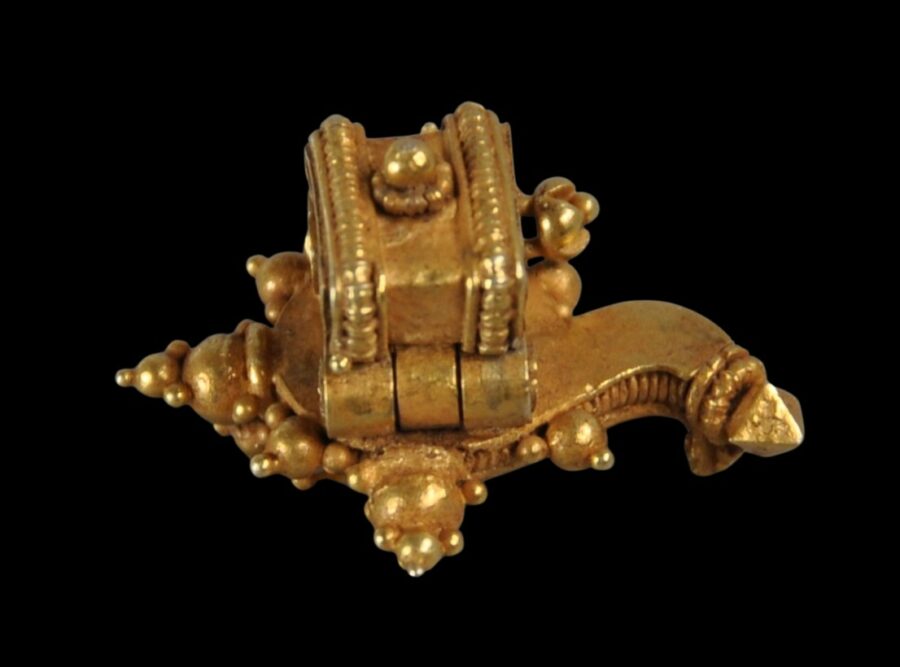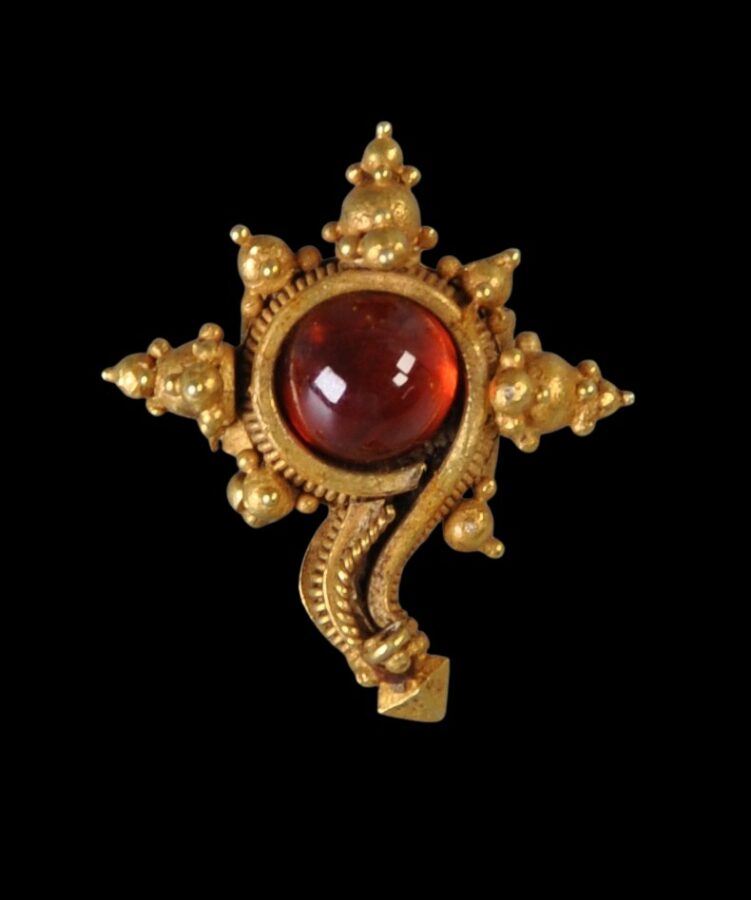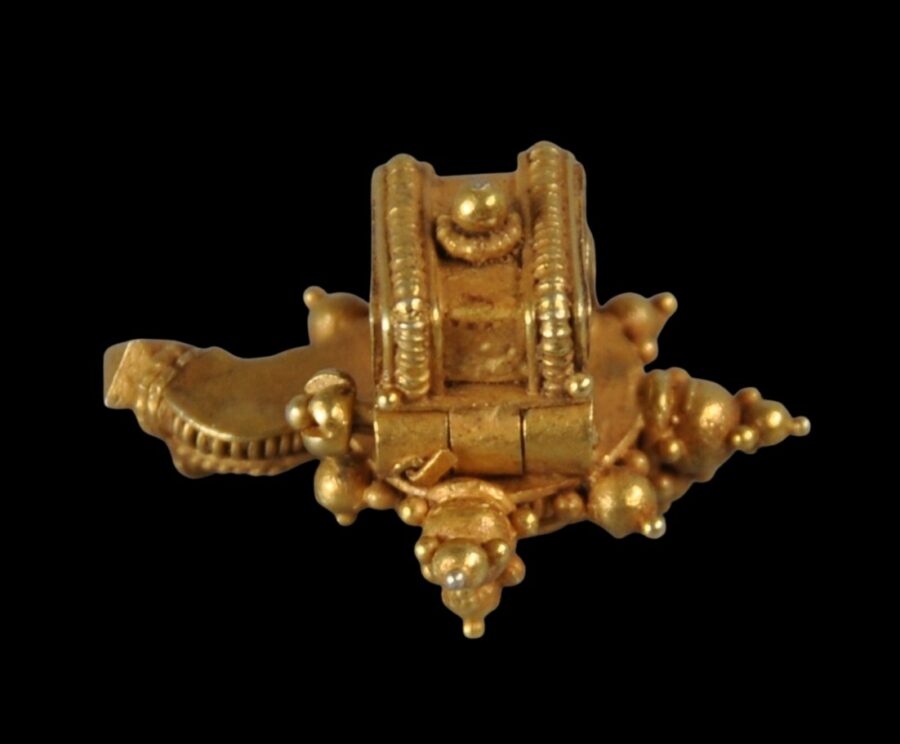Enquiry about object: 8651
East Java Majapahit Gold Conch Ear Ornament
Majapahit Kingdom, East Java, Indonesia 14th-15th century
length: 2.6cm, width: 2.3cm, depth: 1.4cm, weight: 5g
Provenance
Estate Collection of Tom White MBE, a former UK diplomat who served in Southeast Asia in the 1960s & 1970s.
This very fine example of a conch (shankha) ear ornament is of solid gold. It has been cast and further decorated with exceptionally fine gold granulation applique work. A central red round cabochon has been applied to the centre of the conch (though this is undoubtedly a later replacement.)
The ornament comprises the conch form, and then a rectangular, hinged box mechanism on the reverse used to close the ornament and hold it in place.
It is generally believed that such ornaments were intended to be worn in extended ear lobes. However, other theories suggest they were used to decorate the hair. Sometimes they are described as finials for sashes and waist cords.
The conch is an emblem of Vishnu, among the most auspicious of the Hindu deities, the dominant religion of the Majapahit empire which ruled most of Java at the time.
Related examples are illustrated in Lunsingh Scheurleer (2012, p. 104-5) and Miksic (1990, p. 114).
The example here is exceptionally well made. There is little sign of soldering with regards to how the tiny granules were applied to the surface. Instead the granules have been fused, using a non-soldering, high-karat gold process – a sign of excellent gold-smithing skill, and significant age.
References
Lunsingh Scheurleer, P., Gold from Java/Goud uit Java, Gemeentemuseum Den Haag/W Books, 2012.
Miksic, J., Old Javanese Gold, Ideation, 1990.






